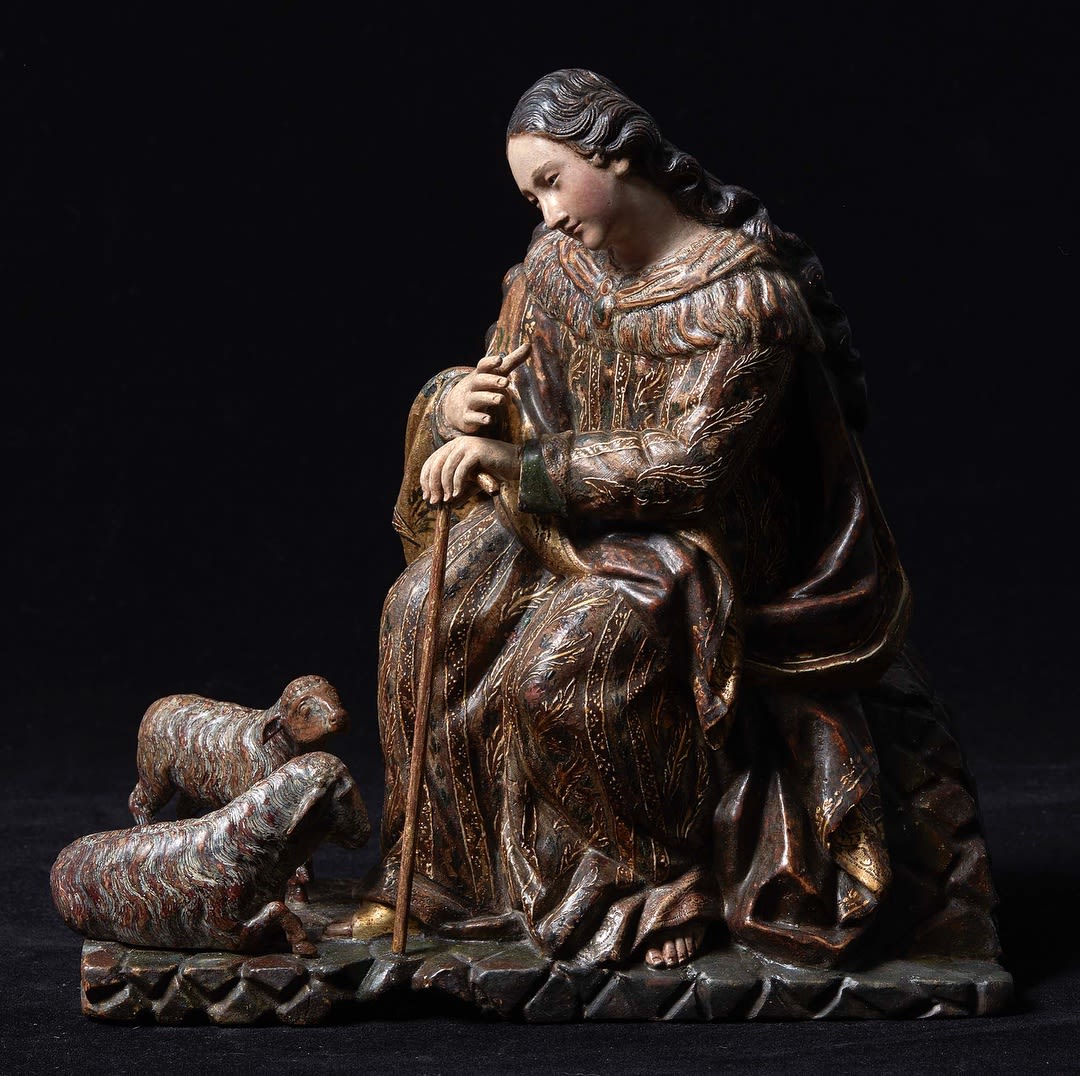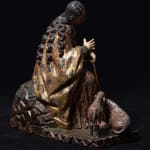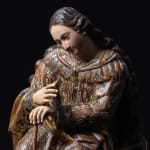Divine Shepherdess
Guatemala, late 18th–early 19th century
Carved and polychromed wood, estofado and gilt silver
Further images
Provenance
Private collection, Spain
The specific iconography of the Divine Shepherdess represents the Virgin seated, accompanied by several sheep, like in this work, with the addition of the visible detail of the rocky crag characterizing this iconography, which helps place her amid a rural environment. The theme of the Divine Shepherdess is one of the few Marian iconographic contributions specific to the eighteenth century, although there are some isolated references to the figure of the Virgin as a shepherdess in previous works written by prominent Marian advocates, such as Mother Mary of Jesus of Agreda, Saint Peter of Alcántara or Saint John of God. However, this devotion became widespread in the early eighteenth century, as a result of the miraculous vision experienced by Capuchin monk Isidoro of Seville (1662-1750). Apparently, on Saint John’s Eve in 1703, upon returning from his daily sermon and while praying in the low choir at the convent church of the Capuchin fathers in Seville, he had a vision where he saw the Virgin dressed as a shepherdess, bearing the attributes proper to a shepherd, such as the crook, and accompanied by some sheep. The following day, Brother Isidoro would visit painter Alonso Miguel de Tovar, a great admirer of Murillo, to describe to him in detail what had happened, for the painter to depict it and fix it to a canvas. Even Brother Isidoro himself wrote in 1705 a book entitled La Pastora Coronada (“The Crowned Shepherdess”), in which he described her in great detail. Thus, Christ’s character as the Good Shepherd was transferred to the figure of Mary, turning her also into a shepherdess of souls that she would free from evil and sin.
Quito was one of the major sculptural production centers during the American Baroque, which, based on the initial and inevitable influence of the Spanish models and works that arrived to the viceroyalties, adopted some well-defined features of its own over the centuries. Among them, we should highlight a certain Eastern influence concerning faces or polychromies, besides a fondness for classical straight-profile canons.
read essay





